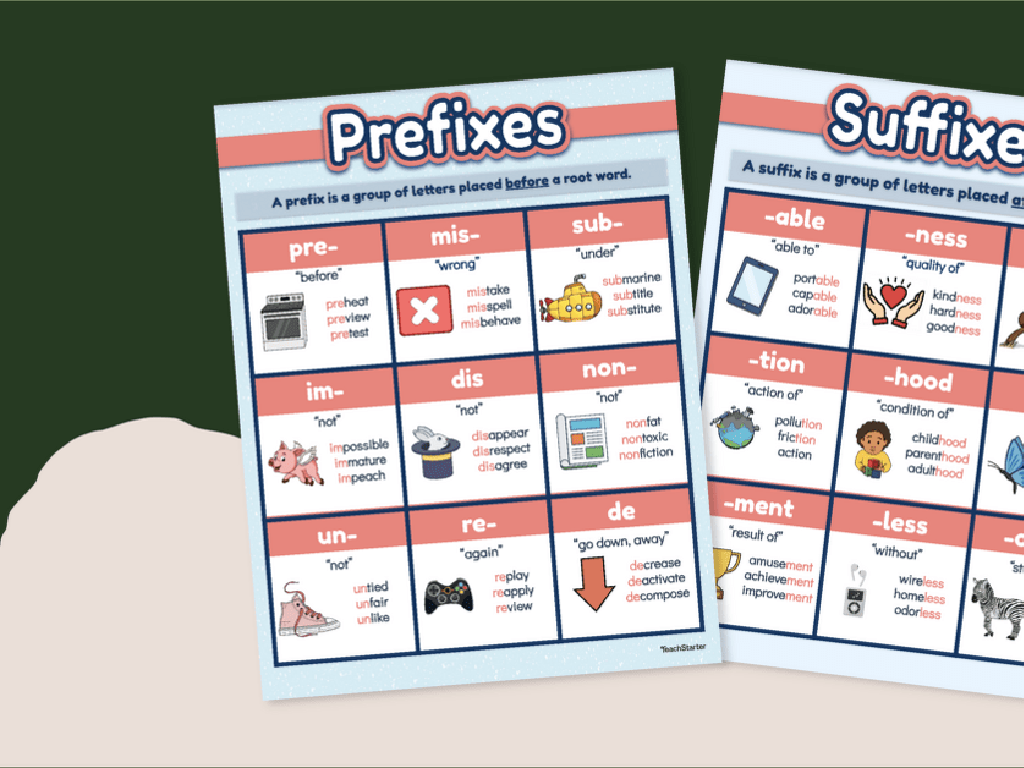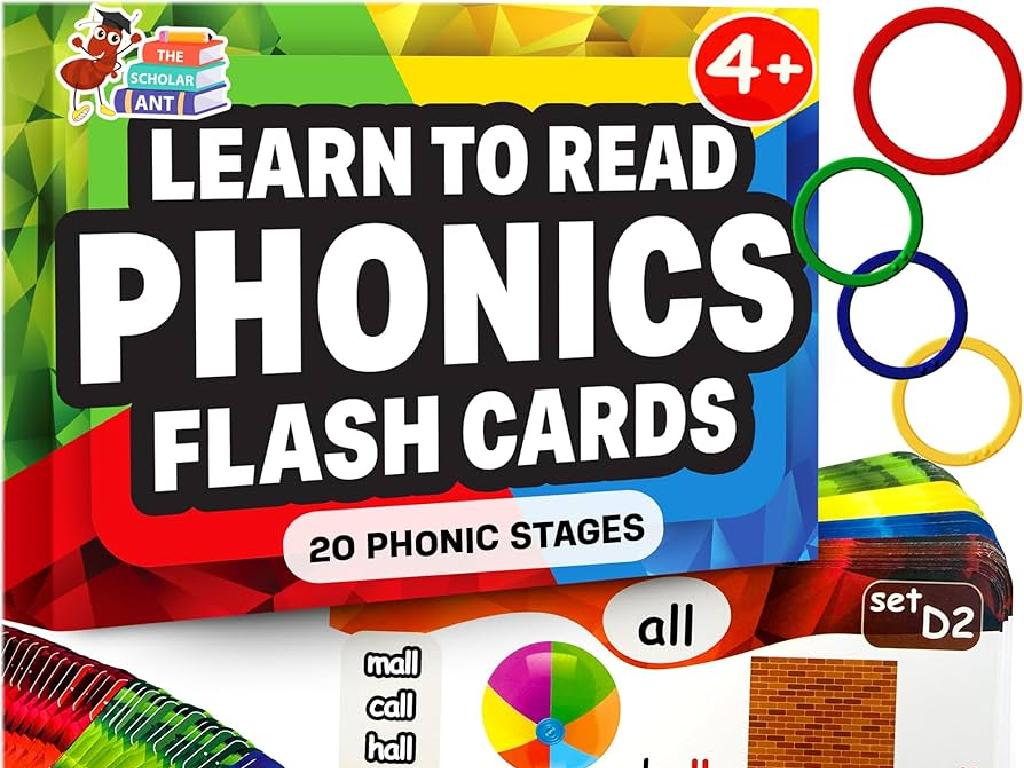Capitalizing The Names Of People And Pets
Subject: Language arts
Grade: Third grade
Topic: Capitalization
Please LOG IN to download the presentation. Access is available to registered users only.
View More Content
Today’s Adventure: Capitalizing Names!
– Capital letters start sentences
– They also start names of people
– Like ‘Sarah’ and ‘Mr. Smith’
– Names of pets need capitals too
– For example, ‘Fluffy’ and ‘Spot’
– Capitals show respect and importance
|
This slide introduces the concept of capitalization, specifically focusing on the names of people and pets. Begin by explaining that capital letters are used at the beginning of sentences and for proper nouns, which include people’s names and pets’ names. Emphasize that using capital letters for names shows respect and acknowledges the importance of the individual or pet. Provide examples of proper names with capital letters and contrast them with common nouns that do not require capitalization. Encourage students to think of names they know and practice identifying the capital letters. This will set the foundation for understanding the broader rules of capitalization in future lessons.
Capitalization: People and Pets’ Names
– What is capitalization?
– Using big letters like A, B, C at the beginning
– Capital letters in sentences
– Names of people and pets
– Always start with a big letter, like Sarah or Rover
– Practice capitalizing names
– Let’s write names correctly with capital letters!
|
This slide introduces the concept of capitalization to third-grade students, emphasizing its use in proper nouns, specifically the names of people and pets. Begin by explaining that capitalization is the use of uppercase letters to signify the importance of certain words and to signal the beginning of new sentences. Highlight that all names of people and pets should always start with a capital letter, regardless of where they appear in a sentence. Engage the class with examples and encourage them to practice by writing down names they know, ensuring they start with capital letters. This will help them grasp the concept of capitalization in a fun and interactive way.
Capitalizing Names of People and Pets
– Every person’s name is special
– Names always start with a capital
– Examples: ‘Sarah’, ‘Mohamed’, ‘Ling’
– These are proper nouns and unique to each individual
– Let’s practice with a fun activity!
– We’ll identify names in sentences and capitalize them
|
This slide introduces the concept of capitalization of names, emphasizing that every person’s name is unique and should begin with a capital letter. Use examples that reflect the diversity of the classroom. The activity will involve students identifying names within sentences and ensuring they are capitalized. For the activity, provide sentences with names that are not capitalized and have the students correct them. This can be done as a written exercise or an interactive whiteboard activity. Encourage students to share why they think names are important and to think of names that are special to them, such as family members or pets.
Capitalizing Names of Pets
– Pets are family members
– Capitalize pet names
– Just like people, every pet name starts with a big letter
– Examples: ‘Buddy’, ‘Whiskers’, ‘Goldie’
– ‘Buddy’ the dog, ‘Whiskers’ the cat, ‘Goldie’ the fish
– Think of more pet names
– Use capital letters for your own pet’s name or dream pet
|
This slide is aimed at teaching third graders the importance of capitalizing the names of pets, emphasizing that pets are considered part of the family and therefore their names are proper nouns that require capitalization. Start by explaining what capitalization is and why it’s important. Provide clear examples with common pet names and encourage the students to come up with additional names, which can be from their own pets or pets they wish to have. This activity will help reinforce the concept of capitalization in a fun and relatable way. In the next class, ask students to share the pet names they thought of and discuss the importance of using capital letters for each name.
Capitalization: Names of People and Pets
– Capitalize first letters in names
– Start names with a big letter, like ‘S’ in ‘Sarah’ or ‘B’ in ‘Buddy’.
– Lowercase after the first letter
– Only the first letter is big, the rest are small, like ‘sarah’ or ‘buddy’.
– Special names have unique rules
– Names like ‘McDonald’ have a big ‘M’ and ‘D’.
– Practice with fun activities
|
This slide introduces the basic rules of capitalization for names, which is a key skill in writing. Emphasize that only the first letter of names of people and pets should be capitalized, and the rest of the letters should be lowercase unless the name has a special spelling. Provide examples of both regular and special names. Encourage students to practice by writing down names they know, ensuring they capitalize correctly. Activities could include writing a short story about a person and their pet, making a list of names from a hat and rewriting them correctly, or a worksheet where they circle the correctly capitalized names.
Let’s Practice Capitalization Together!
– I’ll write sentences on the board
– Help me find the names to capitalize
– Look for words that are names and should start with a big letter
– We’ll correct the sentences as a team
– Remember: Names of people and pets get capitals!
– Examples: ‘susan’ should be ‘Susan’, ‘fluffy’ should be ‘Fluffy’
|
This interactive class activity is designed to reinforce the concept of capitalizing proper nouns, specifically names of people and pets. Write sentences on the board with common names in lowercase. Encourage the students to identify the names that need capitalization. Correct the sentences together, ensuring each child understands why each name needs a capital letter. Use examples like ‘jim went to the park’ and guide them to correct it to ‘Jim went to the park’. Similarly, for pet names, use examples like ‘my dog max loves to play fetch’ and correct it to ‘My dog Max loves to play fetch’. This will help them remember to always use capital letters for names. Have a list of sentences prepared for this activity, and consider having small rewards for students who participate actively.
Class Activity: Name Hunt
– Explore the classroom on a Name Hunt
– Find objects with names
– Decide on capitalization need
– Does the name refer to a specific person or pet?
– Pair up and list names found
|
This interactive activity is designed to help students recognize the importance of capitalizing proper nouns, specifically names of people and pets. Have the students walk around the classroom to find objects that have names on them, such as books with the author’s name, labeled containers, or even name tags on desks. They should work in pairs to discuss whether the names they find should be capitalized and why. Encourage them to consider if the name refers to a specific person or pet, which would require capitalization. After the hunt, each pair will create a list of the names they found and share their decisions with the class. This will reinforce the rule of capitalization through practical application and peer learning. Provide guidance and clarification as needed during the sharing session.
Capitalization Homework: Names of People and Pets
– Congratulations on learning capitalization!
– Homework: Write 10 sentences
– Include names with capital letters
– Use names of people and pets
– Remember, every name starts with a big letter!
– Share your sentences tomorrow
|
This slide marks the conclusion of the lesson on capitalization and transitions to the homework assignment. The students are tasked with writing 10 sentences that include capitalized names of people and pets, reinforcing the day’s lesson. Remind them that proper nouns always start with a capital letter. This exercise will help solidify their understanding of the concept. In the next class, be prepared to allow students to share their sentences, which will not only help in assessing their grasp of the concept but also encourage public speaking and confidence. Offer praise for effort and correct usage, and provide gentle corrections as needed.






